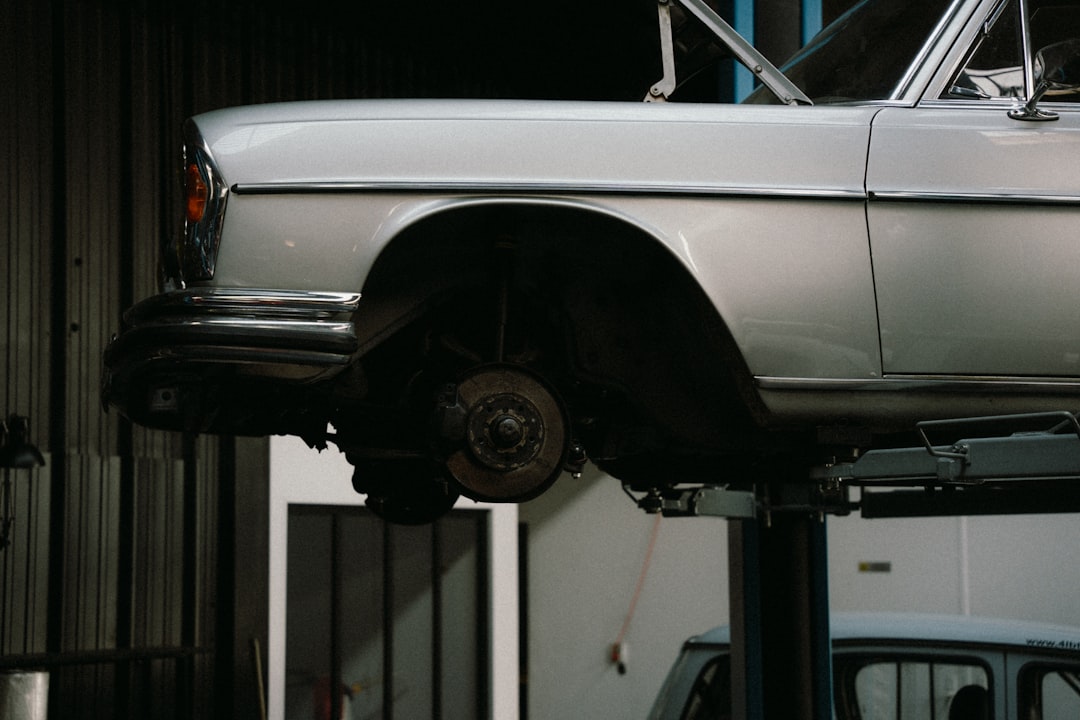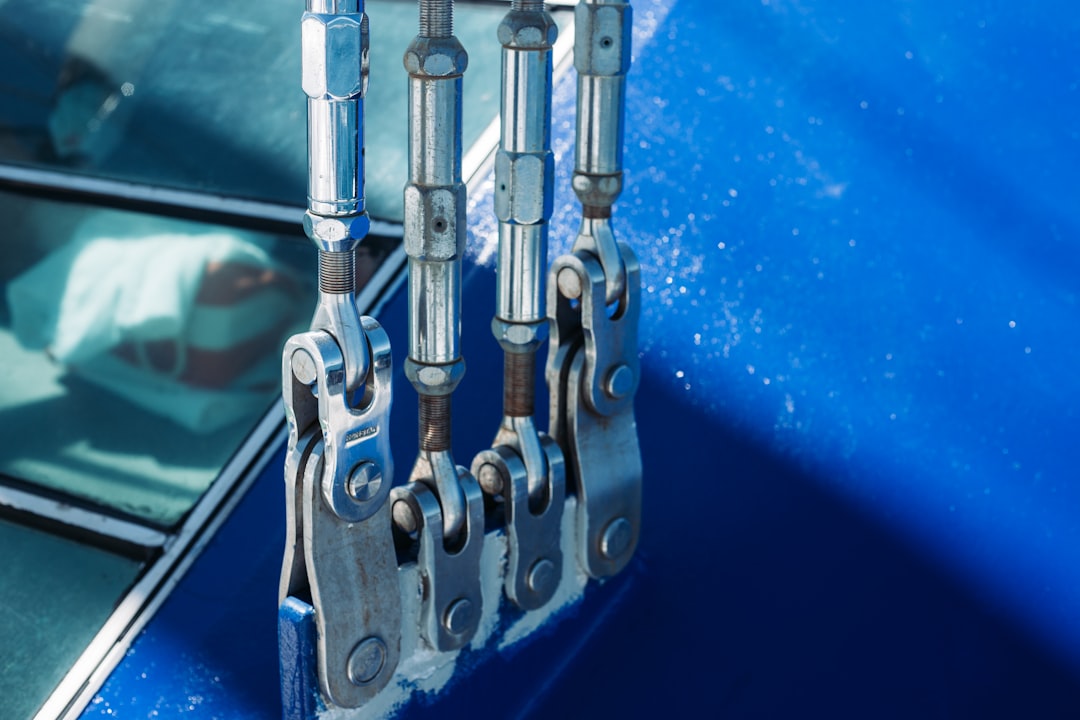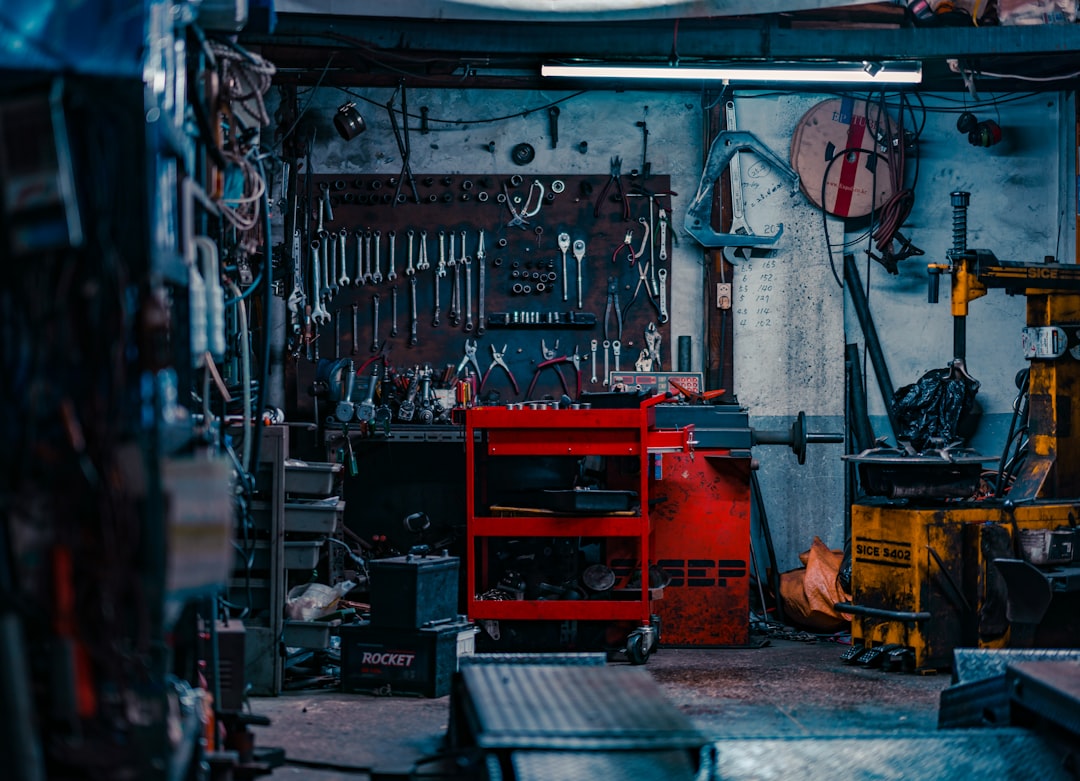

Engage prospects with a scan and streamline customer engagement with FREE QR code marketing tools by Sona – no strings attached!
Create a Free QR CodeFree consultation

No commitment

Engage prospects with a scan and streamline customer engagement with FREE QR code marketing tools by Sona – no strings attached!
Create a Free QR CodeFree consultation

No commitment
QR codes have become a powerful tool for bridging offline encounters with online engagement in the automotive lift repair industry. Garage operators and marketing leaders can use these simple codes to improve customer experience, capture leads at every service point, and streamline critical business processes, no app or complex infrastructure required. By meeting customers and technicians where they are, QR codes reduce friction, speed up workflows, and create a measurable data trail that supports growth.
Automotive shops contend with costly downtime, slow communication, and missed opportunities when they lack real-time data on repairs and walk-in customers. QR codes bring a seamless solution, enabling instant booking, immediate troubleshooting support, and swift identification of customer intent. This speed is vital as safety standards and compliance needs demand quicker, verified access to documentation for technicians and clients alike. When scan activity routes directly into your CRM and service tools, your team can respond faster, follow up more intelligently, and keep every lift safe and compliant.
This guide explores how QR codes can optimize each phase of the lift repair process. Learn practical applications, proven strategies, and essential best practices designed specifically to drive efficiency and meaningful engagement for automotive lift service providers. Whether you manage a single shop or a multi-location operation, the ideas below will help you translate foot traffic and equipment interactions into outcomes you can track and improve. For broader campaign ideas, see qr codes in marketing.

Shops often lose leads because the interaction happens in the bay or at the counter and never gets recorded. Paper intake sheets, printed brochures, and manual phone tag slow everything down, and by the time someone calls back the opportunity has cooled. QR codes convert these analog touchpoints into digital actions that are fast, trackable, and easy for customers and technicians to complete on the spot.
Replace outdated processes with QR-enabled experiences. Service tags can trigger a mobile booking form instead of a phone call. Safety signage can link to the current certificate of inspection and service history instead of a binder behind the desk. A brochure on lift maintenance can drive to a pricing configurator and email capture form instead of hoping a reader remembers to call later. With Sona QR, dynamic codes also let you update destinations without reprinting and sync all scan data directly to tools like HubSpot or Salesforce.
You can implement these upgrades incrementally. Start with one or two high-friction moments such as intake forms and emergency repair requests, instrument those with QR codes, then expand to compliance and customer education. The goal is to make every scan lead to a useful digital action and every action flow back into your systems for measurement and follow-up.

Automotive lift repair shops operate in environments where safety, speed, and documentation all matter. Customers want quick answers and fast turnaround. Technicians need immediate access to the right information and the ability to alert management when equipment is at risk. Owners must keep spotless records for audits and compliance. QR codes solve gaps in each of these areas by connecting physical moments to digital tools.
Common offline materials in this industry include appointment cards, service stickers, inspection certificates, and safety placards. Without a direct digital bridge, customers might pocket a card and forget to call, or technicians may hunt through binders for the latest manual. A QR code on each of these items shortens the path from intent to action and creates a usable data signal for the business.
When implemented thoughtfully, QR codes become the connective tissue between your physical shop and your digital systems. They enable faster action, smarter follow-up, and better visibility across the entire service lifecycle.

Different jobs require different QR formats. While basic web links cover many needs, automotive lift repair services benefit from forms, contact cards, and triggers that start conversations immediately. The right format reduces friction and ensures the scan creates value for both the user and the business.
Static QR codes are appropriate for fixed assets such as a PDF of a generic lift manual. Dynamic QR codes are better for anything you may need to update or measure, including booking pages, inspection checklists, safety documentation, and campaign-specific landing pages. With Sona QR, you can manage both types, switch destinations without reprinting, and capture analytics across every code.
Selecting the right format for each placement improves user experience and increases conversion. Dynamic formats also unlock measurement and continuous optimization so your deployment keeps getting better.

The best opportunities often hide in plain sight. Every lift, waiting area, and service counter is a potential entry point to your digital funnel. When interactions are not tracked, the business loses chances to educate, convert, and retain customers. QR codes let you instrument these touchpoints to capture demand as it happens.
Start by mapping your physical footprint. Identify where customers and technicians make decisions or ask for help. Prioritize placements where a scan creates immediate value such as rapid booking, instant documentation, or quick troubleshooting.
Placing QR codes where they solve a clear problem is the key to adoption. When a scan saves time, eliminates confusion, or provides proof of compliance, users will engage and return.

QR codes can support the full scope of lift service operations. They can trigger bookings, streamline inspections, guide troubleshooting, and connect technicians with the exact information needed for safe, efficient work. Each use case should be designed with the end user in mind and mapped to a measurable business outcome.
Focus initially on moments that reduce downtime, increase service bookings, or improve compliance. As you collect data, you can extend QR experiences to enhance customer education, increase retention, and drive referrals.
By designing each use case around a clear call to action and a measurable goal, you can quantify impact and build an internal business case for broader deployment.
Every scan is a signal. It reveals interest, context, and intent. By deploying unique QR codes across touchpoints and mapping each to a specific action, you create a segmented dataset for precision follow-up. This is especially powerful in automotive lift repair where your audience includes walk-in customers, fleet managers, safety inspectors, and technicians.
Make segmentation practical by aligning codes with journey stages and use cases. Awareness scans might come from window decals and trade show pamphlets. Consideration scans might come from service brochures and pricing sheets. Conversion scans might begin on invoices or service tags. Feed these segments into your CRM and marketing tools to deliver relevant messages without guesswork.
Segmentation transforms QR codes from simple links into a data engine. The more intentional you are about code placement and tagging, the richer your audience signals and the stronger your retargeting performance.
QR codes work best as connectors across channels. They turn static print into interactive experiences and make previously untrackable interactions measurable. For automotive lift repair services, this means every brochure, sign, and invoice can feed useful data into your marketing and service workflows.
Plan QR integration with a channel map. Identify print materials in circulation, physical signage opportunities in and around the shop, and outbound campaigns like direct mail. Assign each asset a unique code so you can see where scans are coming from and which messages perform best. Use consistent calls to action and brand design so customers recognize and trust the experience.
With a centralized platform like Sona QR, you can manage codes across channels, monitor performance, and sync scan data with downstream tools for attribution and automation. This connected approach turns every channel into a contributor to revenue.
Launching a QR campaign is straightforward when you align each step to a clear business objective. Define the problem, choose the right code type, design for real-world conditions, deploy in high-impact placements, and measure outcomes you can improve over time. The framework below is tailored to the realities of automotive lift repair, from safety signage to service tags.
Before you create your first code, clarify your audience and the moment you want to influence. Is it a technician needing a manual, a fleet manager scheduling inspections, or a customer requesting an emergency fix? Satisfy a specific need with each code, then build from there.
Selecting the right use case keeps your deployment focused and measurable. Pick high-friction moments where a scan saves time, such as emergency repair requests, compliance lookups, or parts ordering.
Choose between static and dynamic codes based on whether you need tracking and flexibility. Most shop use cases benefit from dynamic codes that support analytics, updates, and retargeting.
Design for real-world conditions. Shop environments vary in lighting, distance, and angle, and gloves or dust can affect handling. Good design ensures consistent scans.
Roll out codes where they will generate the most value, then expand as you learn. Prioritize lift equipment, safety signage, waiting areas, and invoices.
Measurement turns QR campaigns into a growth lever. Set up dashboards, review performance, and iterate on placements and content.
Engagement is only the beginning. For automotive lift repair teams, you must connect scans to meaningful outcomes such as booked appointments, completed inspections, and contract renewals. Traditional tools may show scan counts but fail to tie them to revenue. A platform built for attribution fills that gap. For model comparisons, see Single vs Multi-Touch Attribution Models.
Sona QR captures detailed scan data, and Sona.com links those interactions to your marketing and sales ecosystem. You can see the entire buyer journey: a scan on a lift sticker leads to a booking, a follow-up email leads to a maintenance plan signup, and a later scan on an invoice triggers a review. This visibility helps you allocate budget to what works and sharpen operations where friction remains.
By treating QR codes as first-class data sources, you move from anecdotal wins to a predictable growth engine. You will know which surfaces generate business, which audiences to prioritize, and which workflows to automate next.
QR codes succeed when they are easy to scan, immediately useful, and backed by automation. As you scale, standardize your approach so every new placement adheres to best practices that maximize adoption and ROI.
Think beyond a single code per location. Assign unique codes by equipment and use case to unlock granular insights. Let scan activity trigger journeys that help customers and hold your team accountable for response time. The result is a smoother customer experience and a shop that runs on data rather than guesswork.
Creative deployment examples include placing QR codes on lift certification plates that link to the active certificate, adding codes to torque wrench lockers that open calibration records, and using a code on invoices to enroll customers in maintenance plans.
Shops that integrate QR codes into everyday workflows report faster response times, fewer missed leads, and more confident compliance management. The key is not just adding QR codes, but designing each one to trigger a valuable action and feed data back into the system.
Use the examples below as a starting point and adapt them to your environment. Measure baseline performance, then test variations in placement, CTA, and landing pages to find your local best practices.
These examples highlight the versatility of QR codes when paired with strong process design and analytics. The consistent thread is a clear action at the moment of need, plus measurement to prove impact.
Experience shows that small design decisions and operational details determine whether QR deployments deliver outsized returns or languish unused. Invest time in planning and training up front, and you will see scalable, repeatable gains.
Avoid deploying codes as an afterthought. Each placement should have a single purpose, a crisp CTA, and a destination that loads quickly on mobile. Test in the real environment. Dust, glare, and distance can all affect performance, and busy technicians will not wrestle with a code that is hard to scan.
QR-enabled workflows create digital footprints for every lift issue, supporting compliance, audits, renewals, and upsell opportunities. When paired with a platform like Sona QR, your shop gains a real-time command center for engagement and attribution, turning physical interactions into measurable business outcomes.
QR codes have become essential for automotive lift repair businesses wanting to turn everyday tags, signage, and shop materials into actionable digital interactions. They solve persistent pain points, like lost leads and lagging workflows, by providing instant access, seamless tracking, and actionable analytics across every customer touch. Because codes are inexpensive and easy to deploy, you can start small, learn quickly, and scale with confidence.
From emergency service bookings and compliance management to nurturing ongoing customer relationships, QR code integration consistently yields lower downtime, better data, improved segmentation, and measurable revenue results. Solutions today offer seamless CRM integration and real-time analytics, ensuring that every interaction is visible and valuable. Sona QR helps you create, manage, and optimize codes at scale, while Sona.com connects scans to pipeline and revenue so you can invest where it matters most.
By making QR code strategies a foundation of your lift repair operations, your business stays agile, compliant, and competitive, leveraging every engagement for growth and customer satisfaction in a connected, measurable future. If you are ready to begin, Start creating QR codes for free, connect them to your booking and CRM systems, and watch your offline-to-online funnel accelerate.
QR codes have revolutionized the automotive lift repair services industry by transforming traditional service access into seamless, tech-enabled experiences. They streamline technician workflows, enable instant access to repair manuals, and provide real-time updates — all while capturing valuable data to optimize service efficiency and customer satisfaction. Imagine instantly connecting your team to the right repair information with a simple scan, reducing downtime and boosting client trust.
With Sona QR, you can create dynamic, trackable QR codes tailored for automotive lift repair, updating content on the fly without reprinting. Every scan delivers actionable insights, linking service history and customer interactions directly to your business growth. No more guesswork—just smarter, faster repairs and stronger customer relationships.
Start for free with Sona QR today and revolutionize how you deliver automotive lift repair services—turn every scan into enhanced efficiency and satisfied customers.
Signs include unusual noises, error codes, and recurring issues that can be reported quickly using QR codes placed on the lift for faster diagnosis.
Select a service that utilizes real-time digital tools like QR codes for instant booking, troubleshooting support, and compliance documentation to ensure fast and trackable repairs.
Common issues include mechanical noises, error codes, and maintenance needs that require timely service to reduce downtime and ensure safety compliance.
The article does not specify repair costs but suggests using QR codes linked to pricing configurators and service forms for transparent and accessible pricing information.
Ensure access to up-to-date safety certificates and inspection documents via QR codes on safety signage, and follow verified procedures to maintain compliance and technician safety.
QR codes streamline lead capture, enable instant booking, provide quick access to manuals and safety documents, and integrate scan data into CRM systems for better service management.
Static QR codes are used for fixed information like generic manuals, while dynamic QR codes support updates, analytics, bookings, inspection forms, and promotional campaigns.
Place QR codes on lift equipment, control panels, safety signage, service tags, waiting areas, invoices, parts counters, and marketing materials to maximize engagement and tracking.
They link to the latest inspection certificates and safety checklists, making audits transparent and reducing the risk of using outdated documentation.
Use analytics platforms to track scan rates, conversion to bookings, response times, and link scan data to CRM systems for attribution and continuous optimization.
Design codes with clear calls to action, high contrast, appropriate size for scanning distance, and test under real shop conditions to ensure easy and consistent scanning.
They enable faster reporting of issues, instant access to troubleshooting guides, and quicker booking of repair services, which speeds diagnosis and repair scheduling.
Yes, internal QR codes can link to microlearning modules, certification quizzes, and quick reference guides to improve training consistency and operational safety.
By providing easy access to maintenance plans, safety tips, booking forms, and feedback surveys, QR codes increase customer retention, upsells, and review volume.
Define clear objectives, select the right QR code type, design for usability, deploy in high-impact locations, and continuously track and optimize performance.
Use Sona QR's trackable codes to improve customer acquisition and engagement today.
Create Your FREE Trackable QR Code in SecondsJoin results-focused teams combining Sona Platform automation with advanced Google Ads strategies to scale lead generation

Connect your existing CRM

Free Account Enrichment

No setup fees
No commitment required

Free consultation

Get a custom Google Ads roadmap for your business






Launch campaigns that generate qualified leads in 30 days or less.
